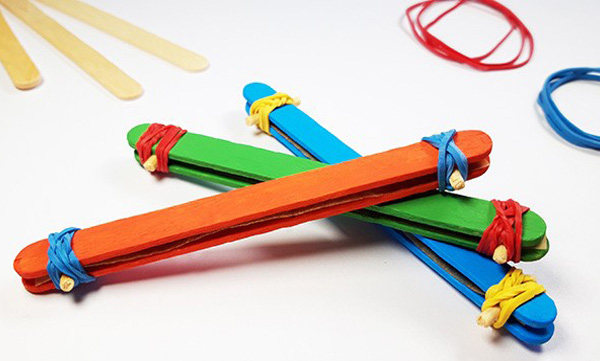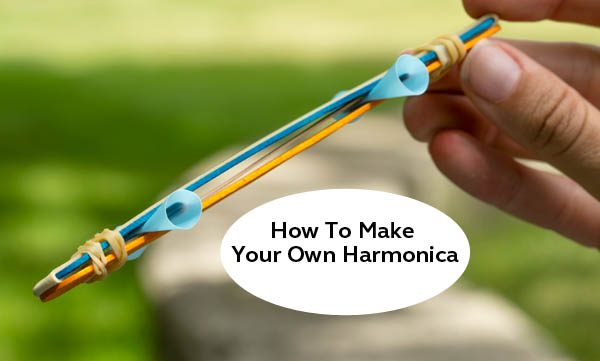Breath of Music: The Magical World of the Harmonica
If you’ve ever seen or felt the soulful melodies of a harmonica, and if you want to create your tune, You’re in the right place.
Can you name the bestselling musical instrument in the world?
Since 1821, the harmonica has become the top-selling instrument in the world and a piece of household equipment in many places. Creating beautiful noise is not just an art—it is also a science!
This post shows how you will design and explore your harmonica-like instrument made from household items. It’s the right time to adjust
What is Harmonica?
Harmonica is also known as the mouth organ. Ancient China was the first place where instruments like the harmonica we use today were discovered. The harmonica became widely used in the 19th century. The modern harmonica is recognized as having been created in the early 1820s by German clockmaker Christian Friedrich Ludwig Buschmann.

Types of Harmonica
- Diatonic
- Chromatic
- Tremolo
- Octave
- Orchestral
- Bass version
The diatonic harmonica is the most popular and is often used in blues, rock, and folk music.
Benefits of playing Harmonica
There are several benefits to playing the harmonica, some of which are:-
- It improves lung capacity
It strengthens the diaphragm and, hence, improves lung capacity
- It enhances breath control, as playing the harmonica requires controlled breathing.
- It helps to develop a sense of rhythm
- It is also a self-relieving activity, as playing harmonica along with
How to care for Harmonica
- First, you have to clean it regularly
- Wiping the instrument every single time after use
- Keep it away from moisture
- Storing it in a protective case increases its lifespan
Harmonica is also used as a learning tool in music
- It serves as an introduction to music for individuals who want to learn music. It is a very good entry point. The harmonium is simple and affordable, and its ease of learning makes it worldwide famous as a music-learning instrument for beginners.
- The harmonica may be an effective instrument for educating kids about music theory. On the instrument, ideas like scales, intervals, and chord progressions may be successfully presented. This practical method promotes active engagement with music theory and makes it easier for kids to understand theoretical ideas.
The Progress of the Harmonica in Modern Music
Electronic harmonicas have been created as a result of technological advancements. Additional capabilities offered by these instruments include built-in effects, MIDI connectivity, and amplified sound. Musicians now have more options than ever to experiment with new sounds and musical styles thanks to electronic harmonicas.
A Therapeutic Instrument: The Harmonica
- The harmonica is frequently used as a therapeutic instrument in music therapy. The harmonica may help people express themselves, let go of their emotions, and engage with others. Harmonica helps with the development of thinking and physical skills, and as we know, music is one of the best therapies. Harmonica is especially helpful for people with neurological disorders.
- Harmonica is simple and has sensational qualities, which make it easy to understand for individuals who have a special need for it. For people who are facing issues such as mental, physical, and emotional difficulties, this music therapy program is best for them. Its portable nature and capacity for self-expression and connection make it unique.
Read Also:
1. Invisible Ink Activity Message
2. How To Make Floating Drawing
Parts of Harmonica
There are Harmonica parts that are as follows:
- Comb: The comb is termed the main body part of Harmonica. Traditionally, combs were made of wood, but nowadays they are made of plastic and metal. Some modern and experimental comb designs are very complex in the way that they direct the air. Comb material was assumed to affect the tone of the harp.
- Reed plate:- Reed-late is the term for a grouping of several reeds in a single housing. The reeds are usually made of brass, but steel, aluminum, and plastic are occasionally used. Individual reeds are usually riveted to the reed plate, but they may also be welded or screwed in place. Reeds fixed on the inside (within the comb’s air chamber) of the reed plate respond to blowing, while those on the outside respond to suction. Most harmonicas are constructed with the reed plates screwed or bolted to the comb or each other. A few brands still use the traditional method of nailing the reed plates to the comb.
- Cover plate: Cover plates cover the reed plates and are usually made of metal, though wood and plastic have also been used. The choice of these is personal; because they project sound, they determine the tonal quality of the harmonica.
- Windsavers: Windsavers are one-way valves made from very thin strips of plastic, knit paper, leather, or Teflon glued onto the reed plate. They are typically found in chromatic harmonicas, chord harmonicas, and many octave-tuned harmonicas. Windsavers are used when two reeds share a cell and leakage through the non-playing reed would be significant.
- Mouthpiece: The mouthpiece is placed between the air chambers of the instrument and the player’s mouth.
Before you begin playing the harmonica, it’s helpful to know its various parts and how they work together to produce sound.
Now, start the activity of making a Harmonica. I hope kids learn more from it.
This activity is suitable for kids ages 7 to 9.
Material Required:-
- Two large craft (ice cream) sticks
- Two wide elastic rubber bands
- One plastic drinking straw
- A ruler
- Scissors
- A piece of paper
- A pen or pencil
Key Concepts: Sound, frequency, and Pitch
How to Make Your Own Harmonica:
Step 1: Keep an ice cream stick on the paper. use scissors to cut it
Step 2: Place the cut-out paper between two ice cream sticks (like a sandwich) and preserve one end firmly with a rubber band. You can use something heavy to hold the rubber band.
Step 3: Now place 1 toothpick (or match stick) between the ice cream stick and the paper and pull it towards the rubber band.
Step 4: Take another toothpick (or match stick) and place it under the paper and on top of the other ice cream stick.
Step 5: Secure the other end with another rubber band.
Step 6: Cut off the extra toothpick sticking out of the ice cream stick.
Step 7: Hold your instrument like a sandwich, holding each end gently with your hands. Try placing your fingers on the small rubber bands on either side.
Step 8: Blow into the opening between the craft sticks as if it were a harmonica and listen to the sound that comes out.
The Science Behind It
The sound coming out of your instrument is the sound produced by blowing on the paper and vibrating it, just like the strings of a violin vibrate when played by a violinist. As you blow into your instrument, you may have noticed that you feel the vibration through the craft stick. When you rebuilt the instrument without paper, you probably found that you couldn’t make a sound when you blew into it. From this you can see that the paper was necessary to produce the sound and the sound was accompanied by vibrations.
Conclusion
The harmonica continues to be a musical instrument that attracts both players and listeners because of its long tradition, various playing styles, and different musical uses. The harmonica’s attraction continues, with its modest beginnings and appearance in blues, folk, country, rock, and other genres.
Whether you are an expert musician or a curious beginner, learning the harmonica may open you to several musical choices.







